The message comes in via text: “Millgate, get up here. We gotta fish. The Yellowstone is like it used to be.”
It’s from my fishing buddy Todd Lanning. He wants me to fish the Yellowstone River with him. Lanning lives and works an hour north of me in Island Park, Idaho. He’s in Yellowstone’s backyard. It’s peak shooting season for me so I have a camera in hand more often than a rod right now, but Lanning’s hopes are high. I don’t have days off any time soon, so I do the next best thing. I go to Yellowstone National Park while I’m working to find out if Lanning’s claims of yester year are even possible. I doubt it because of lake trout.
“The problem here on Yellowstone Lake is the rapid and incredible decline of Yellowstone cutthroat trout through this system,” says Dave Sweet, Wyoming Trout Unlimited Yellowstone Lake special project manager. “From a population of 4 million fish, the lake trout have essentially eaten their way through that population and decreased it by 90 to 95 percent.”
Invasive lake trout are cutting into native cutthroat trout in a massive way in Yellowstone National Park. The first lake lunker took an angler’s bait in 1994. By mid-2000s most of the cutties were gone.
“That’s not allowed,” says Todd Koel, Yellowstone National Park native fish conservation leader. “We’re not going to allow that in Yellowstone National Park. This place is much more than that. We’re way better than that.”
Better must be ambitious and Koel is ambitious. He’s overseeing a massive commercial gillnetting operation on Yellowstone Lake. There’s up to 40 miles of net in the lake daily from May through October. Those nets trap lake trout, which live in deeper waters than cutthroat trout. Large bins stacked on netting boats collect 300,000 fish annually at a cost of $2 million. The operation started in 2009. This year is the halfway mark.
“What I really love about it is just knowing we are making positive change at a time when if we weren’t doing some of these things maybe 10, 20, 30 years from now those fish would be gone,” Koel says. “We’re just doing things right at the right time. We are making a big difference that will last long term for a lot of other people into the future.”
Fins sustain future feathers and fur. When cutthroat trout declined, eagles and bears left the lake in search of other food sources. Signs of cutthroat trout recovery are evident in the grizzlies going after cutties this spring and anglers with fish on this summer. There were more fishermen on opening day than the park has seen in at least five years.

“This fish is more than just a fish,” Sweet says. “It’s a vital part of the economy in this area. The fishery represents about $30 million annually."
You can catch cutthroat trout on flies, but you can’t keep them. You can, however, keep all the lake trout you catch. In fact, you have to. There’s a mandatory kill order on lake trout. Between angler harvest and intense netting, lake trout are taking a punch in the gills.
The park’s goal is a lake trout population crash. The crash is five to seven years away, but cutts are already coming back due to seven years of intense lake trout netting. In simple terms, there are less lake trout eating cutthroat trout.

“The lake trout population is in a steep decline,” Koel says. “Were’ still killing thousands of fish a year so it’s hard from the boat’s perspective, but no doubt the data were collecting says, ‘Yes, you are winning. You just have to keep it up.’ It doesn’t happen overnight or over one year or two years. It takes time. We’ll be there.”
So Lanning’s text is no fish tale. The park’s namesake river really is fishing better than it has in years. Lanning is seeing the first signs of native spawn swimming from the lake into the river without being detoured into an invasive lake trout’s mouth.
Story update:
Montana Fish, Wildlife and Parks closed the Yellowstone River to fishing August 19 due to an unprecedented fish kill in the area. The Yellowstone River is still open to fishing inside the boundaries of Yellowstone National Park. Stay tuned for further updates.




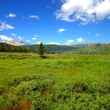
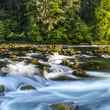





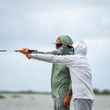
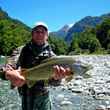









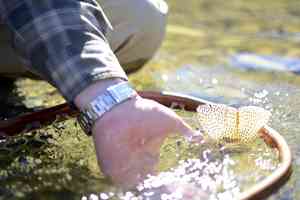
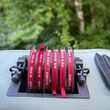

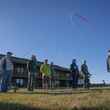


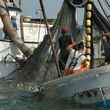
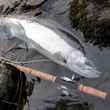
Comments
Scott Schwarting replied on Permalink
Are these lakers being utilized for anything? The article calls it a "commercial" netting operation, but then only goes on to list the cost associated with it; nothing about revenue. Why not serve lake trout in all the restaurants in the park? I know they already serve rainbow trout in some of the restaurants. It seems like a good way to offset the cost, or to allow for expansion of the netting program. It could also provide a good educational opportunity to customers.
VRKan replied on Permalink
I believe the caught lake trout are killed then most are dumped back into the lake so their remains nourish the lake system.
Daniel Carolan replied on Permalink
I am very skeptical that lake trout are the primary culprit behind the population crash. No doubt different types of fish displace one another, but there are examples in the west of cutthroat living harmoniously with lake trout. After reading The Imperiled Cutthroat, I am more open to the idea that something else contributed to the Yellowstone cutthroat's population crash. The park is spending a lot of money to kill lake trout, yet the lake trout population has grown by multitudes, while the cutthroat population continues to increase. This does not add up...
David Sweet replied on Permalink
Mr. Carolan recently commented that he is skeptical that lake trout are the primary culprit behind the cutthroat population crash in Yellowstone Lake. I doubt there is a more studied fisheries system in the country than Yellowstone Lake. Not only have the Park's own scientists reviewed the causes for this population crash; but a formal Science Review Panel composed of some of the finest fisheries researchers from state and federal agencies and academia have independently studied the causes for the cutthroat decline. Three significant factors were identified (lake trout predation, drought, and whirling disease); and among these, the overwhelmingly most significant was found to be lake trout predation. There have been numerous reports issued on their findings. One that might be of interest to Mr. Carolan can be found at https://parkplanning.nps.gov/document.cfm?documentID=37967
This Native Fish Conservation Plan Environmental Assessment has guided the NPS efforts since its publication.
Mr. Carolan also states that there are examples in the west of cutthroats living harmoniously with lake trout. To some extent his statement is true; however, this only occurs when there is a variety and/or abundance of other prey fish species in these systems for the lake trout to eat. Such is not the case in Yellowstone Lake which is primarily a one species system. There the lake trout only have cutthroat to eat. This lake trout introduction and native fish population crash scenario has now been repeated in many other systems in the west including Flathead Lake, Swan Lake, Lake McDonald and others.
No one anticipated that reversing the cycle of increasing lake trout numbers and decreasing cutthroat numbers would be a simple task, or an inexpensive one. Yet, with tremendous diligence and great expense; that reversal has occurred. As Ms. Millgate has eloquently pointed out, the cutthroat are coming back to Yellowstone Lake as the lake trout numbers have decreased. Those of us who love this cutthroat fishery and the ecosystem that it supports are forever grateful for Yellowstone National Park's dedication to protecting and restoring this system.
Dave Sweet
Yellowstone Lake Special Project Manager, WY Trout Unlimited
Daniel Carolan replied on Permalink
Thanks for keeping the conversation going, David. I appreciate your perspective, especially the point you made about cutts being the only other fish in Yellowstone Lake. That clearly makes a difference as other western examples I was thinking of DO have other fish besides macks and cutts, so your point is well taken. Lake trout could only feed on cutts and themselves in Yellowstone Lake. Fisheries biologists, activists, nonprofits, public servants, and TU (of which I am a member as well) workers like yourself are definitely on the ground, doing important work, and I don't want my comment to have come off wrong about that.
I am principally skeptical about the effectiveness of lake trout removal by human beings in Yellowstone Lake because I am skeptical about this method everywhere, short of using rotenone which is obviously very effective, but could not be used in Yellowstone Lake for obvious reasons. To me, perpetual lake trout removal just doesn't sound 100% feasible, and it definitely begs some philosophical questions beyond just its practicality. I don't doubt that a diminished lake trout population will make room for an increase in the cutt population, but isn't it possible that we are seeing a lake trout population decrease because the lake is reaching carrying capacity? Correlation does not always equal causation.
Will the upswing in the cutthroat population continue with the mack removal program? Only time will tell, and I sincerely hope it is effective. In reading your comments, we agree on the idea that there are multiple factors to the population decline, and I am curious what you think of the idea of whirling disease being the principal cause of the initial cutthroat population crash. Is it possible that the lake trout were kind of 'filling a void' when the cutthroat population crashed? Are you aware that there are stocking records from the 1890s that report Yellowstone Lake was stocked with macks (to be sure, I am not aware of the validity/accuaracy of these records, but I find it very interesting)? I also know that nonprofits and government agencies need to prove their worth to the general public. The public needs to feel that the park is 'doing something' about the population crash. I don't think that this is necessarily a bad thing, and I believe in the good motives of people, but isn't it possible that mack removal is a highly visible response to a problem that we may not have the tools to solve? I hesitate to even write that as it comes off as cynical. To be fair, I would rather do something than nothing, but I think these are fair questions.
I love native fish. In my neck of the woods, I am lucky enough to fly fish for Bonneville cutthroat regularly, and it is a joy. I definitely wish mackinaw had never been introduced to Yellowstone. To be clear, I am not a scientist, not an expert, just a guy with questions. Thanks again for the dialogue.
Pages